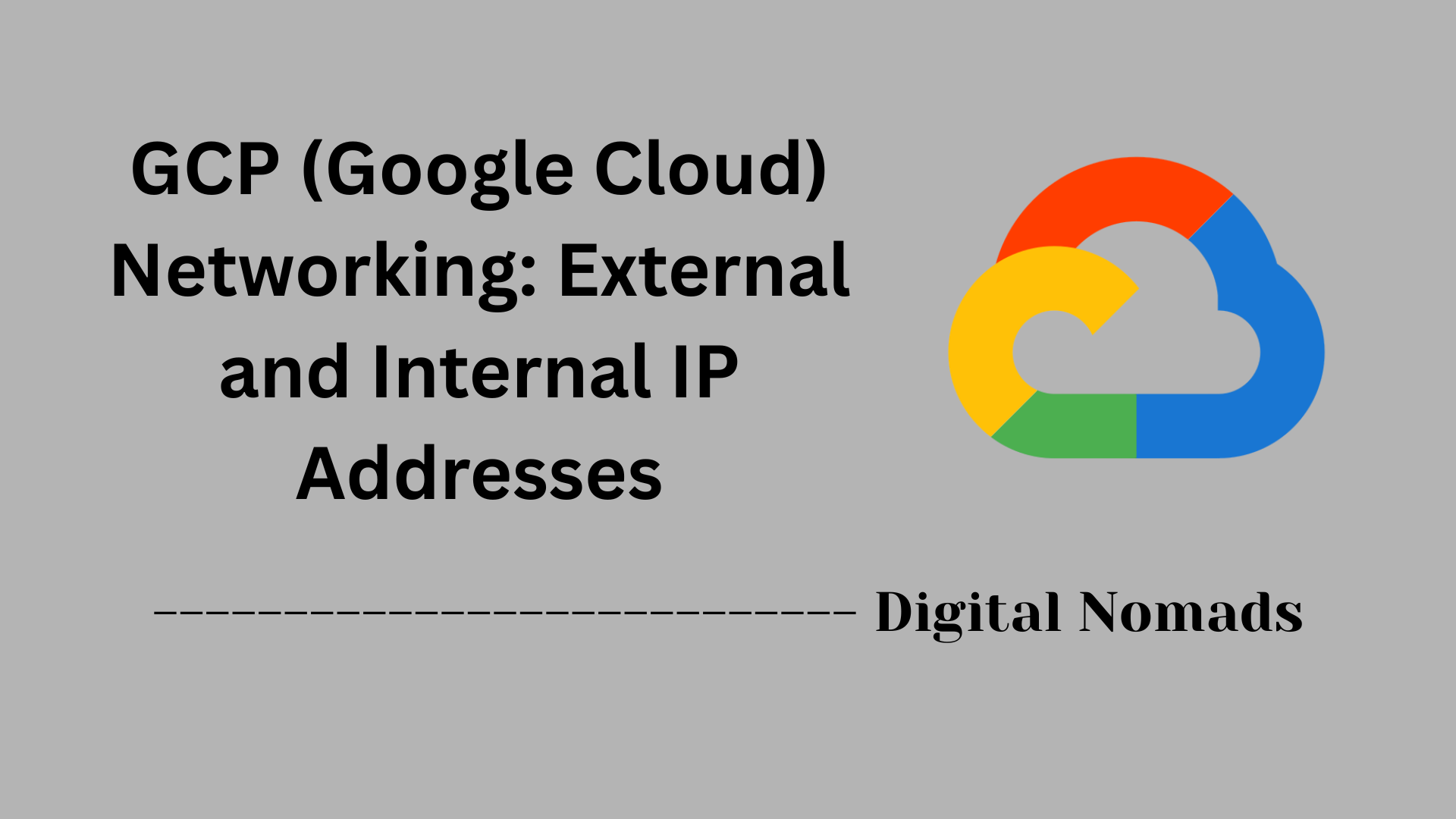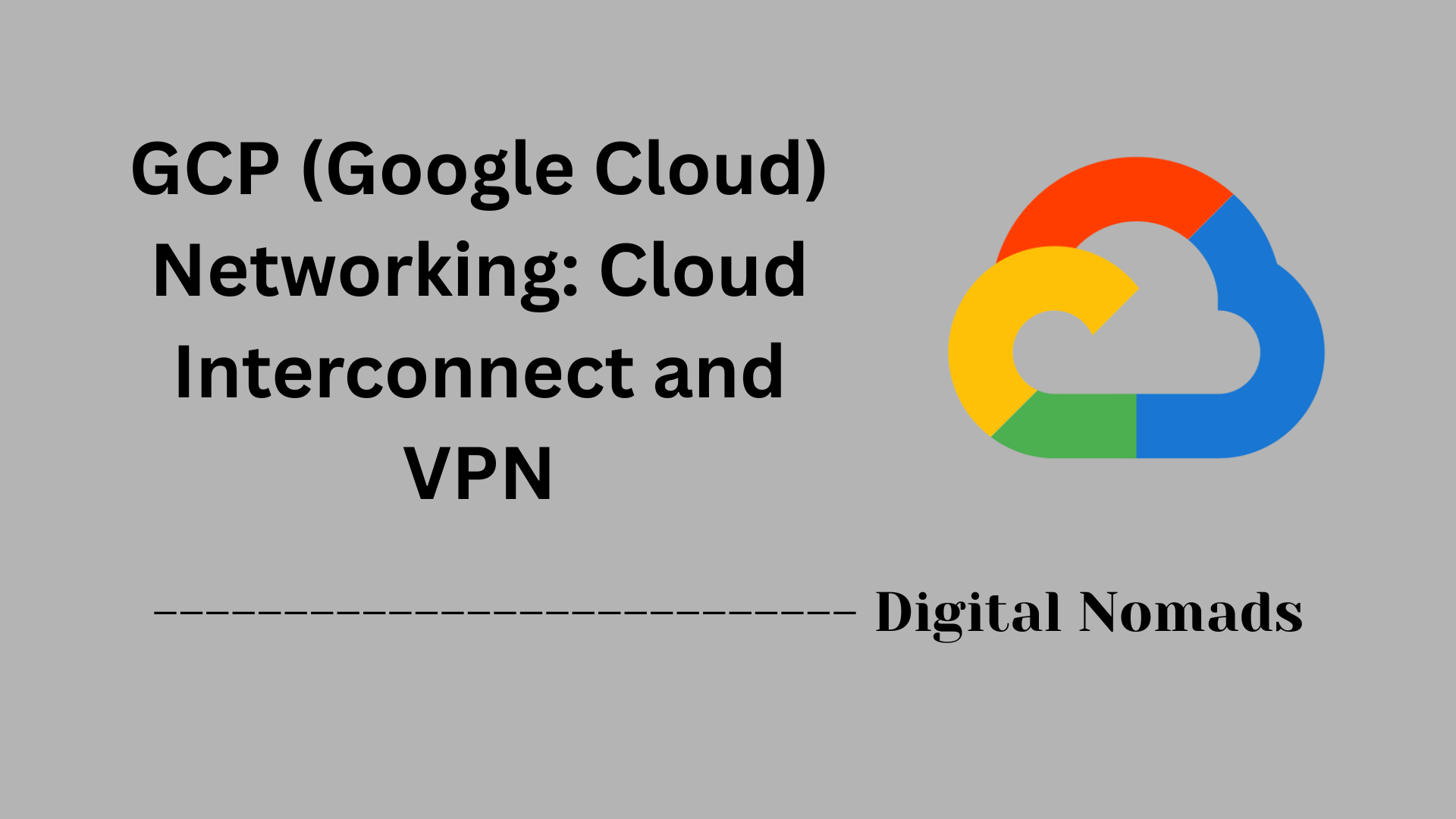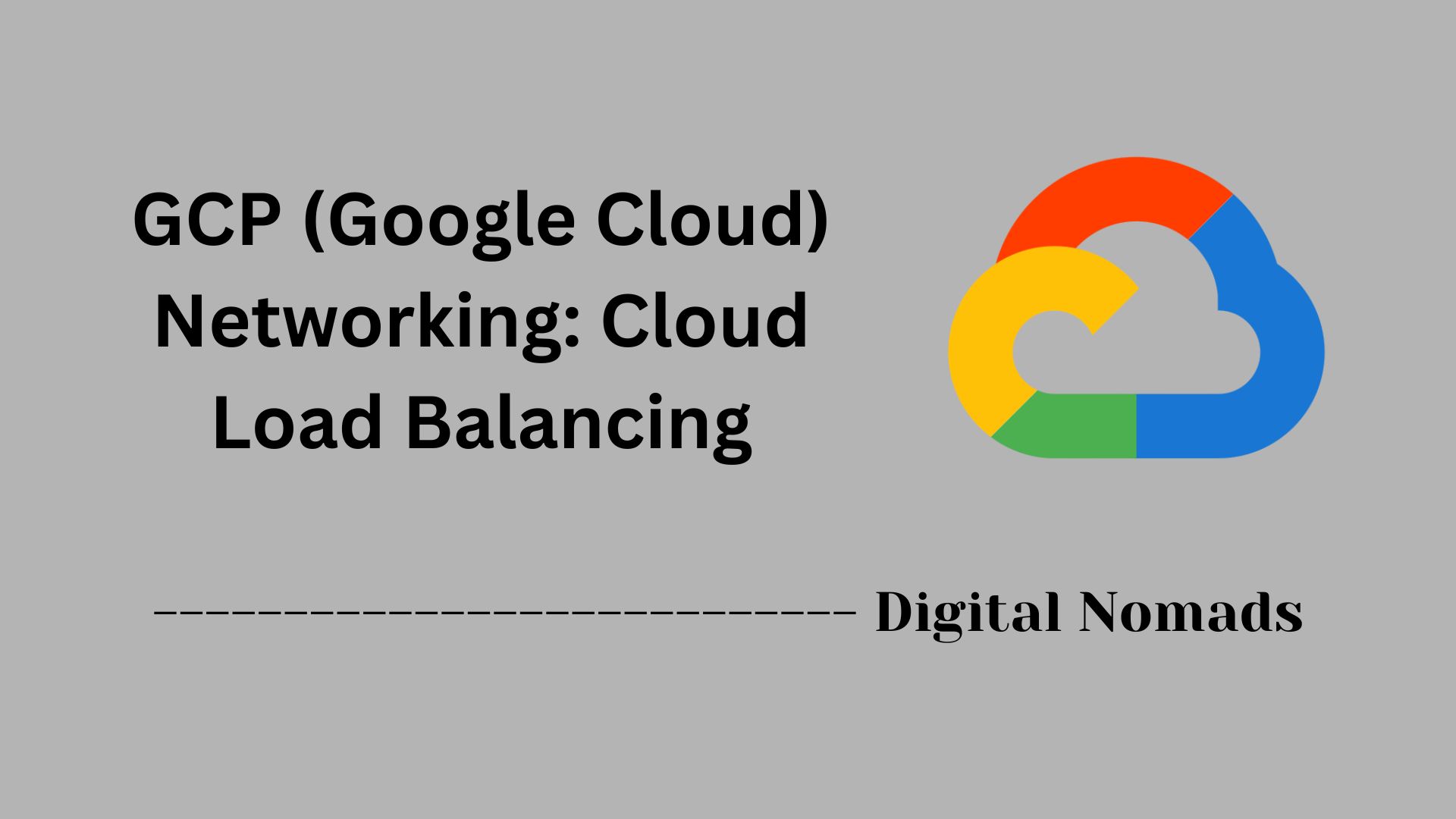Table of Contents
- Overview
- VPC Peering
- VPC Peering vs. Shared VPCConfiguration
- Best Practices
- Conclusion
Overview: GCP Networking – Peering and Shared VPC
What Is It?
GCP (Google Cloud) Networking: Peering and Shared VPC refers to two powerful networking architectures within Google Cloud Platform that allow multiple virtual networks and projects to communicate securely, efficiently, and privately.
- VPC Peering creates a private link between two separate Virtual Private Cloud (VPC) networks, enabling resources in each to communicate using internal IP addresses.
- Shared VPC enables several GCP projects to connect to and use shared subnets that reside in a central, “host” VPC, allowing for enterprise-grade network management and security.
Why You Need to Know About It
Understanding GCP networking options is vital because:
- Security: Both VPC Peering and Shared VPC allow for traffic to stay on Google’s private network rather than traverse the public Internet, greatly reducing exposure.
- Scalability: These features enable organizations to grow by linking teams or departments while keeping workloads isolated and manageable.
- Operational Efficiency: Centralizing network control (with Shared VPC) or allowing flexible inter-project communication (with Peering) helps teams collaborate, share services, and standardize infrastructure.
- Compliance and Policy: Centralized policy enforcement and clear control boundaries support strict compliance and regulatory standards.
How It Works
VPC Peering
- Two VPCs are connected directly after verifying they have non-overlapping IP ranges.
- Once peered, instances in both VPCs can communicate over internal IP addresses, as if they were on the same network.
- Peering is non-transitive: if VPC-A peers with VPC-B, and VPC-B peers with VPC-C, VPC-A and VPC-C cannot communicate unless directly peered.
Shared VPC
- A single “host” project contains a central VPC network and subnets.
- “Service” projects are attached to the host; their resources (like VMs) use subnets and IPs from the host VPC.
- Network and security teams manage routing and firewall rules for all participating projects centrally, while individual teams deploy resources independently.
Key Takeaways
- VPC Peering is best for connecting two VPCs that need private, direct communication while maintaining separation and flexibility.
- Shared VPC excels in large organizations requiring centralized networking, security, and policy management for multiple teams or environments.
- Both options avoid use of the public internet, improve network security, and provide clear boundaries for administration and resource allocation.
By mastering these technologies, you can design cloud networks that are secure, scalable, and aligned with your company’s needs.
VPC Peering
Virtual Private Cloud (VPC) Peering enables direct, private connectivity between two VPC networks within Google Cloud. It allows resources in separate VPCs to communicate with each other using internal IP addresses, bypassing the public internet.
-
Step 1: Plan IP Address Ranges
Ensure both VPCs use non-overlapping CIDR blocks. Overlapping IP ranges are not permitted for VPC peering. -
Step 2: Initiate the Peering Request
From the Google Cloud Console or CLI, navigate to the VPC network of your first project and create a VPC peering connection to the target VPC.
Console path: VPC Network > VPC network peering > Create connection -
Step 3: Accept the Peering in the Other Project
Go to the second VPC, locate the pending peering request, and accept the connection to establish trust between both networks. -
Step 4: Update Routes and Firewall Rules
Configure routes as needed and ensure firewall rules allow communication between the peered networks’ private IP ranges. -
Step 5: Verify Connectivity
Test connectivity by pinging or SSHing between resources in the two VPCs over their internal IP addresses.
Key Considerations:
- VPC peering is non-transitive: If VPC-A is peered with VPC-B, and VPC-B with VPC-C, VPC-A cannot talk to VPC-C unless there is a direct peering.
- Peered VPCs must belong to the same Google Cloud Organization.
- Certain network features may not work across VPC peers (e.g., some load balancers or NAT traffic).
- Monitor for quota limits on peering connections per VPC.
VPC Peering vs. Shared VPC Configuration
Understanding the differences between VPC Peering and Shared VPC configurations is essential for selecting the right Google Cloud networking approach for your organization. Each enables private communication between resources across projects but offers different architectures and management experiences.
-
Step 1: Define Use Case
- If you need centralized network management and wish to share subnets across multiple projects for consistency and security, choose a Shared VPC.
- If the goal is to connect two separate VPCs for private communication (possibly in different projects), use VPC Peering. -
Step 2: Organizational Structure
- Shared VPC requires projects to be in the same Google Cloud Organization and uses a "host" and "service" project structure.
- VPC Peering can connect VPCs in the same or different projects, but must avoid overlapping IP ranges. -
Step 3: Configure Network Relationships
- For a Shared VPC: Assign a host project, share subnets with service projects, and manage routes/firewall rules centrally.
- For VPC Peering: Create a peering connection between each pair of VPCs that require communication, then update routes and firewall rules on both sides. -
Step 4: Transitivity Considerations
- Shared VPC allows multiple projects to communicate through a single, central network.
- VPC Peering connections are non-transitive; each VPC must be directly peered for communication. -
Step 5: Adjust Management and Security
- In a Shared VPC, manage networking and security policies centrally for ease and consistency.
- In VPC Peering, networking and security rules must be maintained on all peered VPCs individually. -
Step 6: Evaluate Scalability and Limits
- Shared VPC can simplify large-scale environments with many projects.
- VPC Peering has quota limits per VPC and can become complex at scale.
| Feature | Shared VPC | VPC Peering |
|---|---|---|
| Architecture | Central host VPC shared with service projects | Peer-to-peer connection between two VPCs |
| Management | Centralized (networking team manages) | Decentralized (each VPC manages its own) |
| Transitivity | Transitive, via central network | Non-transitive, only direct peers communicate |
| Use Cases | Large orgs, shared services, security compliance | Ad hoc connections, isolation between environments |
| Scalability | Ideal for many projects | Limited by peering quotas |
| Firewall/Routes | Managed centrally | Managed per VPC |
| IP Address Overlap | Managed centrally | No overlaps permitted |
Key Considerations:
- Choose Shared VPC when you want unified management, security, and resource sharing across multiple projects.
- Choose VPC Peering for simple, direct connectivity between two VPCs needing private traffic but managed separately.
- For complex environments, you might use both: Shared VPC for most services, and VPC peering for isolated or partner environments.
Best Practices
Implementing Google Cloud networking with VPC Peering and Shared VPC requires careful planning to maintain security, scalability, and manageability. These best practices will help you achieve robust, efficient, and secure network architectures.
-
Step 1: Plan IP Address Space Carefully
Choose non-overlapping CIDR blocks for all VPCs to avoid conflicts. Assign address ranges so future expansion is possible. -
Step 2: Use Shared VPC for Centralized Network Control
Where possible, adopt Shared VPC to centralize networking, routing, and security policy management across projects. -
Step 3: Minimize VPC Peering Connections
Avoid unnecessary peering to reduce management overhead and potential security risks. Use direct peering only when resources absolutely need to communicate. -
Step 4: Implement Consistent Naming and Tagging
Apply standardized naming conventions and labels to networks, firewall rules, and routes, making management and auditing easier. -
Step 5: Design Firewall Rules with Least Privilege
Grant the minimum required permissions between networks and use VPC Service Controls where applicable. In Shared VPC, leverage centralized firewall policies. -
Step 6: Monitor Quotas and Resource Limits
Review and monitor limits such as maximum peering connections and subnet allocations. Plan the architecture so you don’t hit quotas unexpectedly. -
Step 7: Regularly Audit and Test Connectivity
Schedule audits of peering and shared VPC configurations and perform connectivity tests to catch potential misconfigurations or security gaps early. -
Step 8: Document Network Architecture
Keep up-to-date diagrams and documentation for all VPCs, connections, and key rules, supporting smooth operations and easier troubleshooting.
Additional Considerations:
- Review overlapping IP spaces early—avoid using the same subnet in multiple projects.
- If using VPC Peering, remember connections are not transitive: each pair of VPCs must be directly peered to communicate.
- In large or multi-team environments, delegate project administration but centralize network security/policy administration.
- Test changes in a non-production environment to confirm behavior before wider rollout.
Conclusion
Throughout this blog post, we’ve explored the core networking strategies in Google Cloud: VPC Peering and Shared VPC. These tools provide powerful ways to enable secure, efficient, and private communication across projects in your cloud environments.
Here’s a quick recap of what we’ve learned:
- VPC Peering allows direct, private communication between two VPCs using internal IP addresses. It’s ideal for ad-hoc or decentralized project connections but requires non-overlapping IP ranges and has no transitive connectivity.
- Shared VPC enables a centralized approach where a host project shares its VPC network with service projects. This model supports scalable, secure architectures with centralized management of networking resources and security policies.
- When choosing between them, consider your team structure, security requirements, and scale. Shared VPC is best for large, centralized organizations while VPC Peering works well for simpler, specific connections between independent projects or partners.
- We reviewed configuration steps, key differences, and best practices like designing non-overlapping CIDR blocks, minimizing peering sprawl, enforcing least privilege, and maintaining strong documentation.
By understanding the strengths and limitations of both models, you can design a network architecture in GCP that supports your business requirements—whether it’s simplicity, scalability, or strict security compliance.
Thanks for following along! We hope this guide has helped clarify how VPC Peering and Shared VPCs work within Google Cloud. If you're planning your next networking implementation or refining an existing one, use these insights to build confidently and securely in the cloud.
Happy architecting! 👋




